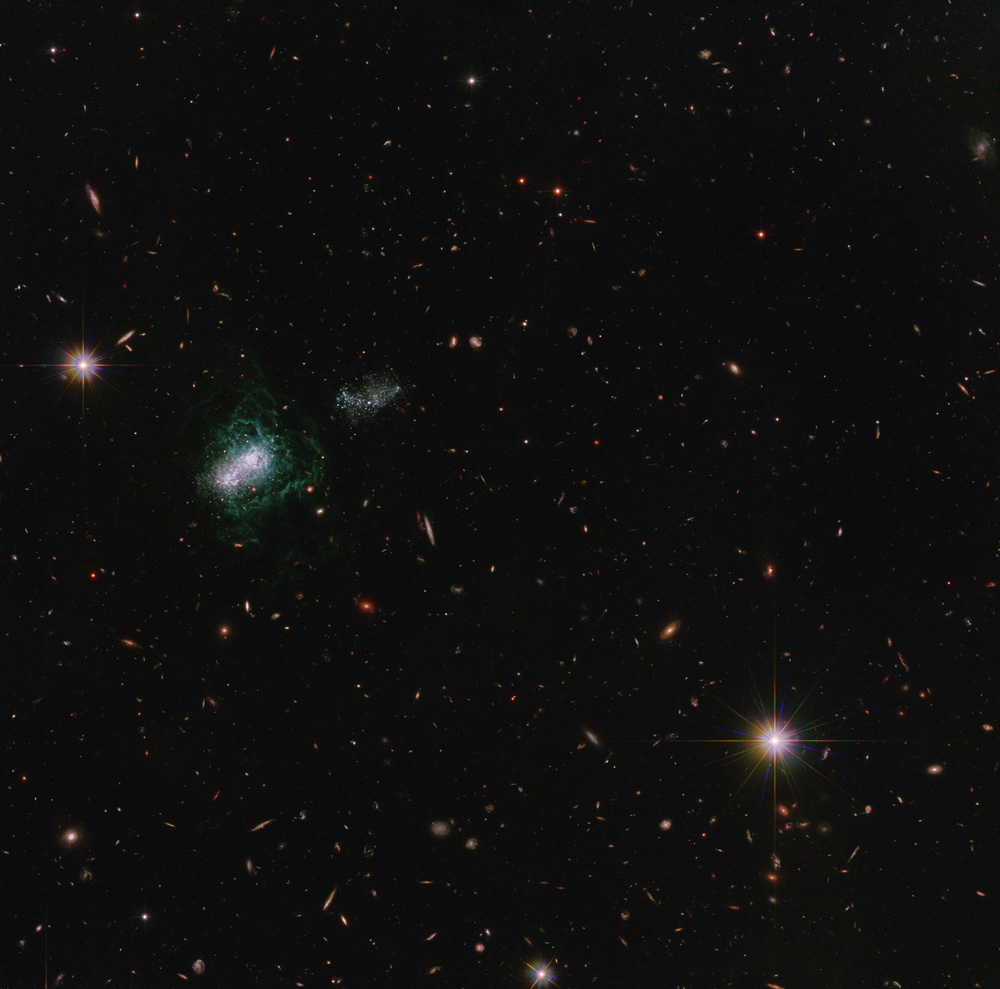
I Zwicky 18 Deep Field (2014)
I have been taking an online course by David Spergel called Imaging Other Earths and at the end of my most recent lecture was stumped by a question asking me to calculate the velocity of an N2 molecule. Failing that, I took a break and did some Hubble processing.
I’ve been eyeing Zw I 18 for a while now and finally decided to do my own take on it. I was surprised to discover that the exposures for this galaxy were actually fairly deep and decided it would be a shame to crop away the richly populated background.
The deep mosaic is a result of a search for Cepheids. A bunch of separate exposures were taken to try to spot the variables. The side effect of this they can all combine for a nice, deep exposure and a pretty picture for us to look at. On the other hand, only wideband green, red, and near-infrared light was collected, which results in a rather odd, green color for the foreground which should rather be a nice pink cloud of H-alpha. In contrast, looking into the background you can see it has the opposite problem due to redshifting. Several conspicuous, distant background galaxies have no problem looking bright red. You could think of it like a camera’s focal plane except for color. If you focus on “correct” colors for the background, the foreground will shift blue. Conversely, balancing on the foreground shifts the background to red. Of course, some galaxies are intrinsically bluer or redder and that can also confuse things.
The foreground stars are a bit odd looking because all of the exposures taken did not line up perfectly with one another. I was going to clean up the spikes but decided instead to leave them this time. Many might think they’re ugly but I kind of like them.
Data from two separate proposals were used. As you can see, astronomers thought Zw I 18 was a baby galaxy. Imagine their surprise to learn that is not true. You might also be interested to read about the guy who cataloged it a while back: Fritz Zwicky. I bet you wish you had a name that cool.
The Rosetta Stone without a Distance: Hunting for Cepheids in the “Primordial” Galaxy I Zw 18
Are There Young Galaxies in the Local Universe: The Age of the Blue Compact Dwarf Galaxy I Zw 18
Red: HST_MOS_3816_ACS_WFC_F814W_sci
Green: HST_MOS_3816_ACS_WFC_F606W_sci
Blue: HST_9400_08_ACS_WFC_F555W_sci
North is NOT up. It is 14.8° clockwise from up.
Other sizes, including an original sized PNG are available here.
Copyright information:
Hubble data is public domain, but I put a lot of work into combining it into beautiful color images. The minimal credit line should read: NASA / ESA / J. Schmidt

This work is licensed under a Creative Commons Attribution 3.0 Unported License.


